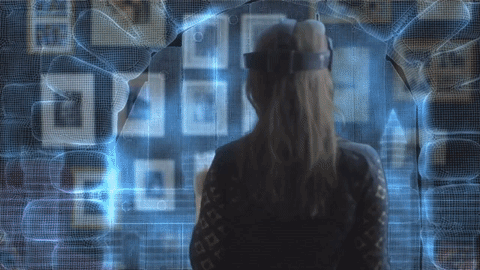At VRgineers, we say we put the “real” into virtual reality. Being able to touch the virtual world does just that. That’s why we are happy to announce the start of an exciting collaboration with Ultrahaptics – the creators of “virtual touch”. Using ultrasound they are pioneering a new way to communicate with technology, enabling users to naturally feel and touch virtual objects.
Connect with your visions
Ultrahaptics has developed a unique technology that can cast various types of sensations onto a user’s hand using ultrasound. That sensation can be molded into any shape or form, allowing the user to feel like he is actually holding a button, sticking his hand into a light breeze or popping a bubble without needing to wear or touch anything. And that haptic feedback means much more confidence and control when interacting with the virtual elements. Additionally, getting rid of now redundant buttons and knobs incites cleaner and more elegant product design.
“We focus on providing the most true-to-life crisp image in VR to allow professionals work with virtual objects as if they were real. Adding haptics to that is another logical step to make that immersion experience even deeper.” says Marek Polcak, CEO of VRgineers.
“We believe our haptic technology makes a crucial contribution to a fully immersive experience and are thrilled to partner with VRgineers to add mid-air haptics to their headset. The result is going to enable design engineers and executives in the automotive, aerospace, architecture and other industries to experience their designs in truly immersive and compelling VR environments,” says Alex Driskill-Smith, VP North America of Ultrahaptics.
Touch the non-existing using Ultrahaptics
An invention like that has numerous practical use cases and can revolutionize the way humans interact with virtual environment. Enriching the virtual objects with the sense of touch and physical presence creates a truly immersive and compelling experience. Combined with VRHero 5K Plus headset, its ultra-wide 170º field-of-view and crystal-clear high-resolution image, it moves VR experience to a new level.

Now when you sit in a virtual car to test it, you can sense the engine vibrations on the steering wheel and using the dashboard controls feels more natural and responsive. And the automotive industry is just one of many areas this combination of technology can improve. Pairing of haptic and visual sensations opens up further ways to test and train in VR across many other industries.
VRgineers enterprise VR solutions are already transforming the creative and training processes in many progressive companies. Contact us here and let’s discuss how we can help you as well.

